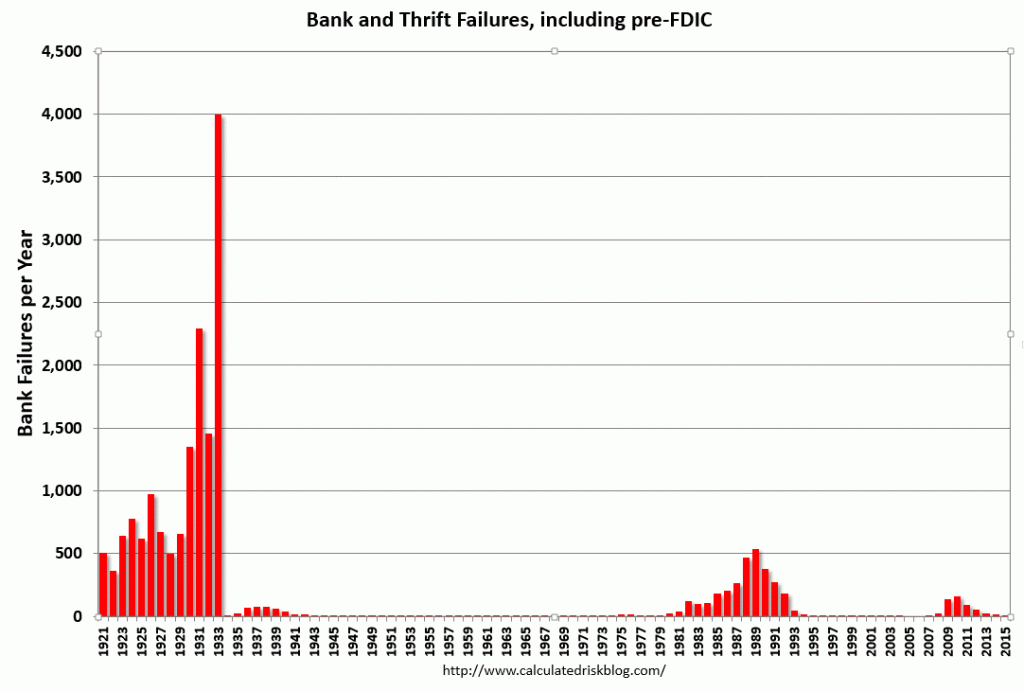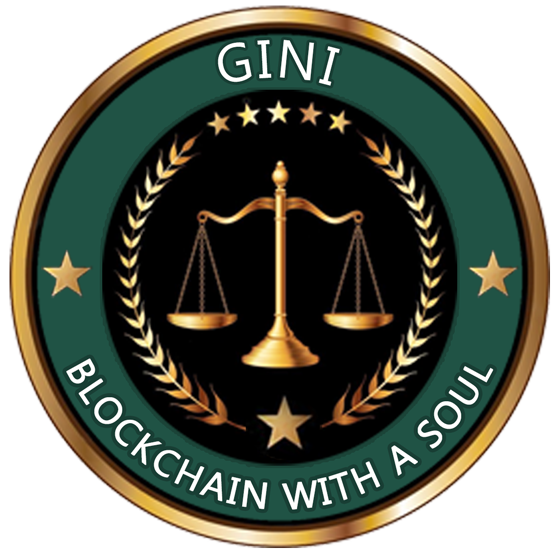How Can We Help?
What Caused the Great Depression? (Part 3)
Americans Are Sentenced to Generational Debtor’s Prison. As we learned in Part 1 and Part 2 of this “What Caused the Great Depression?” series, specific humans in the U.S. Congress, White House, and the Federal Reserve made conscious choices to sentence the American people to debtor’s prison to pay for a foreign war that posed no significant existential or economic threat to the United States. By dumping approximately $500 billion (in 2016 USD) of so-called Liberty Bonds into the U.S. economy between 1917 to 1919, the stage was set for generations of debt-fueled wars and secret regime change adventures. In this Part 3, we focus on the U.S. Government’s most significant Post-WWI monetary and economic policymaking blunders, which continue to suck all the life and wealth from the U.S. economy to this day.
The Rise of Monetary Policy as a Policymaking Tool. Between the 1913 Federal Reserve Act and the U.S. entry into World War I in 1917, large banks and corporate special interest groups persuaded the career-minded politicians in the U.S. Treasury and Federal Reserve to believe that a new tool called “monetary policy” was necessary to liberate the federal government from the gold standard. In this case, “liberate” means they would be able to manipulate interest rates to tightly control the price and quantity of debt, labor, and all other goods and services needed to fuel the war machine. According to these special interest groups, their lawyers and bankers, the magic of monetary policy would make it easier for the United States to “win the war to end all wars,” as famously proclaimed by President Wilson. (Do you think the high profitability that the banks enjoyed from selling all that debt to a convulsing world was merely a coincidence?)
Interest Rate Manipulation Perpetuates the Pain. Manipulating and keeping interest rates perpetually and artificially low enabled the federal government and large retail banks to create and sell debt (especially “Liberty Bonds”) throughout the global economy more easily. It was the Fed’s pre-1929 monetary policy manipulation that fueled the debt bubble that substantially caused the 1929 stock market crash. Then, with the crisis already underway, the Roosevelt administration dramatically increased the suffering by raising the federal Discount Rate from 3.5% in 1928 to 6% only a year later. Given that the “Discount Rate” is the interest rate that banks pay for the money they borrow from the Federal Reserve, and this rate determines the interest rates that everybody else pays throughout the entire U.S. economy, this event had a severely disruptive impact on virtually every corporation and every man, woman and child in America.
Abrupt and Steep Interest Rate Hikes Cause Capital Markets to Seize and Dry Up. If the Fed had stayed out of the interest rate manipulation game leading up to 1929, there would be no need to abruptly correct their previous monetary policy mistakes because all free and fair markets, by definition, will price themselves correctly when they’re free from government distortions and the corruptive influence of monopolistic, government-abetted special interest groups. The federal Discount Rate definitely needed to rise from the artificially low 3.5% rate in 1928 to a natural market-based rate; however, after the crisis was already underway, raising the interest rate so sharply, abruptly pushing the economy to comply with the gold standard again, trying to aggressively constrain the money supply immediately after a 15-year debt-binge party . . . . all of these actions undoubtedly choked the life out of the U.S. capital markets too quickly. This caused credit and capital to dry up throughout the global economy at exactly the wrong time.
Destruction of Community Banks Increased the Size of Big Banks & Destabilized the Banking System. The Federal Reserve Act of 1913 required small community banks to have nearly double the capital reserves (as a percentage of total deposits) as large banks. This requirement made it impossible for small banks to compete with large banks, which enabled the largest banks to lend money at a much lower cost. Considering that the authors of the Federal Reserve Act included JP Morgan, Nelson Aldridge, Paul Warburg, and Benjamin Strong—all of which were large shareholders and staunch allies of the biggest banks—it’s no surprise that the Federal Reserve Act would reinforce the dominance of the biggest banks at the expense of community banks. This significantly contributed to the collapse of approximately 50% of all U.S. banks from a peak of about 30,000 banks in 1921 to less than 15,000 banks in 1933. The following chart illustrates the extremely high bank failure rate during this period.
Bank Failures 1921-2015
 (Data Source: Federal Deposit Insurance Corporation)
(Data Source: Federal Deposit Insurance Corporation)
Too Much Inventory and Capacity. Massive over-investment in inventory and production capacity in the post-WWI U.S. economy was the inevitable result of allowing banks to operate with ultra-low capital ratios and highly leveraged balance sheets. This enabled banks to extend too many loans to borrowers throughout the global economy at dangerously low loan-to-value ratios. Then in 1930, the politically-motivated Smoot–Hawley Tariff Act caused U.S. exports to almost completely evaporate, which represented over 70% of U.S. GDP prior to 1929. A nationwide ocean of unserviceable debt and a glut in every form of supply was the predictable consequence, which created even greater downward pressure on the price of everything.
Incompetent Labor Policy. Both Presidents Hoover and Roosevelt arbitrarily set fixed labor wage rates too high, which was intended to create a politically-motivated show of their support for suffering American laborers. The wage rate freezes were destructive to the economy because whenever a price of any good or service is not flexible enough to adjust to real-world supply and demand forces, markets become distorted; and if the price can’t fall, there will be less of it consumed. As the demand for all goods and services throughout the global economy was falling, corporations couldn’t reduce the prices they were paying for labor. So naturally they stopped hiring people. This dramatically increased the unemployment rate and reduced the amount of discretionary income and capital flowing throughout the economy, which further decreased demand for everything. This transformed what should have been a temporary and natural debt deflation process into a government policy-induced decade-long Great Depression.
Rapid Debt Liquidation. As prices for goods and services fell, companies and individuals had to liquidate more and more debt and inventory at ever-cheaper prices to pay their suffocating debt obligations. This forced thousands of companies and individuals into bankruptcy because prices fell so low that they couldn’t make enough money to repay their debts. And since the banks who made all these toxic loans were not getting their money back, over 9,000 banks went bankrupt in the 1930s, which is exactly what should happen to state and private financial institutions when they operate recklessly and loan money at artificially low interest rates.
Artificial “Deflationary Death Spiral”. Because there was no FDIC insurance until the 1933 Banking Act, naturally there were frequent bank runs and panics as customers withdrew their money because they were scared they would lose it if their banks collapsed. This removed money from the banking system, which further exacerbated the deflationary pressures throughout the economy and created the dreaded “deflationary death spiral” that you may sometimes hear about in the media. But this was not natural deflation; it was artificial deflation directly caused by incompetent federal officials who implemented technically flawed economic policies. As we learned previously about the Myth of Deflationary Death Spirals, natural deflation does not create irrational “deflationary death spirals.”
The First Wave of Industrial Automation Magnified the Unemployment Rate. As the 1929 Stock Market Crash pounded the United States, the U.S. economy was still undergoing the first wave of automation. Electrification of the U.S. infrastructure, mechanized assembly lines, and large-scale farming equipment were displacing many thousands of laborers, but other new industries had not yet grown large enough to absorb them. This would have only been a short-term condition lasting 12-24 months based on typical labor force dislocation and supply and demand cycles, but the short-sighted labor price controls implemented by career-minded U.S. politicians prolonged the labor market pain for millions of Americans for much longer than necessary.
Short-Sighted International Trade Tariffs. The Smoot–Hawley Tariff Act was enacted in 1930 to block over 20,000 imported products because perpetually campaigning politicians wanted to make a theatrical show of their support for American companies. Senior U.S. officials told the American people the tariff would protect them from foreign competition. However, at least 1,000 economists explicitly warned the U.S. Congress that the tariff would lead to disaster, but the career politicians in control of U.S. international trade policy were clearly more concerned about putting on a theatrical show to achieve a short-term political popularity boost. They had no interest in listening to facts, logic, or dire warnings of the long-term consequences of such a short-sighted trade policy. The predictable result: An international tariff war ensued and international trade came to a grinding halt, further prolonging The Great Depression and spreading the pain to other countries.
Stock Market Speculation. The stock market speculation leading up to The Great Depression was merely a byproduct of all the grossly negligent, politically-driven policymaking decisions described throughout this three-part series. Between 1927 to 1929, the banks loaned as much money as the North American and European continents could consume; thus, their high-yield lending profits began to dwindle. That meant the banks didn’t have any significantly profitable place to put all the Ponzi money that was still sloshing around the banking system. At this point, large institutions and their most important clients used all their excess Ponzi money to fund their speculative trading in the stock market. Predictably, this fueled the stock market bubble that inevitably popped in 1929.
Virtually All Human Problems That Are Predictable Are Preventable. Everything I have described in this three-part series was absolutely predictable for anybody who has a nonpartisan, non-biased perspective of the U.S. political and banking systems. Virtually every problem caused by human-made systems that is predictable is also preventable. Thus, every problem that contributed to the Great Depression was predictable and preventable.
The 2008 Crisis Was a Preview of a Coming Greater Depression. Too much debt, artificially low interest rates, non-existent regulation of opaque securities trading activities, and woefully inadequate bank capital reserve ratios were the root causes of The Great Depression. Not coincidentally, those same problems were exactly what caused the 2008 financial crisis. Given the ongoing and destructive impact of the political and economic toxic cloud, it’s no surprise that even after all the political theater of the Dodd-Frank Act, today the largest “too-big-to-fail” U.S. banks are even bigger, the amount of private and public debt sloshing throughout the U.S. economy is far greater, the labor force participation rate is at historic lows, there are more companies being destroyed than being created every year, and the quality of life for 99% of Americans has been persistently falling for at least 15 years. There is no doubt that another major economic crisis is coming, which is a topic for a future article.
Back to Part 1 or Part 2 of the series, “What Caused the Great Depression?”
Did You Like This Resource?
Gini is doing important work that no other organization is willing or able to do. Please support us by joining the Gini Newsletter below to be alerted about important Gini news and events and follow Gini on Twitter.

